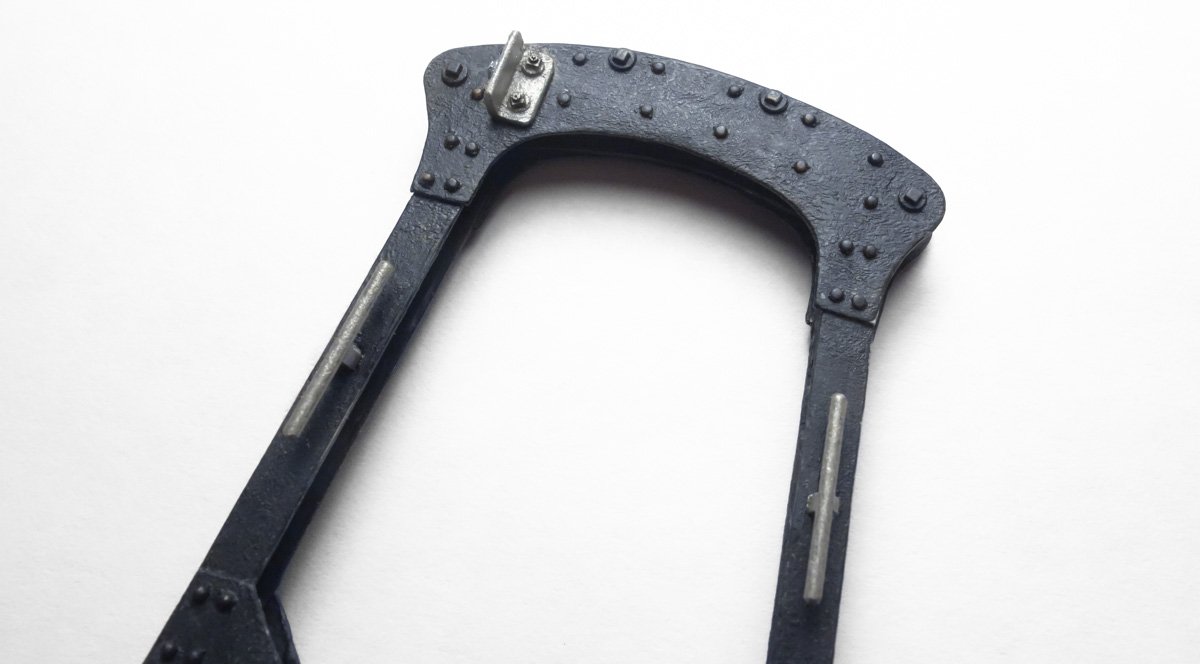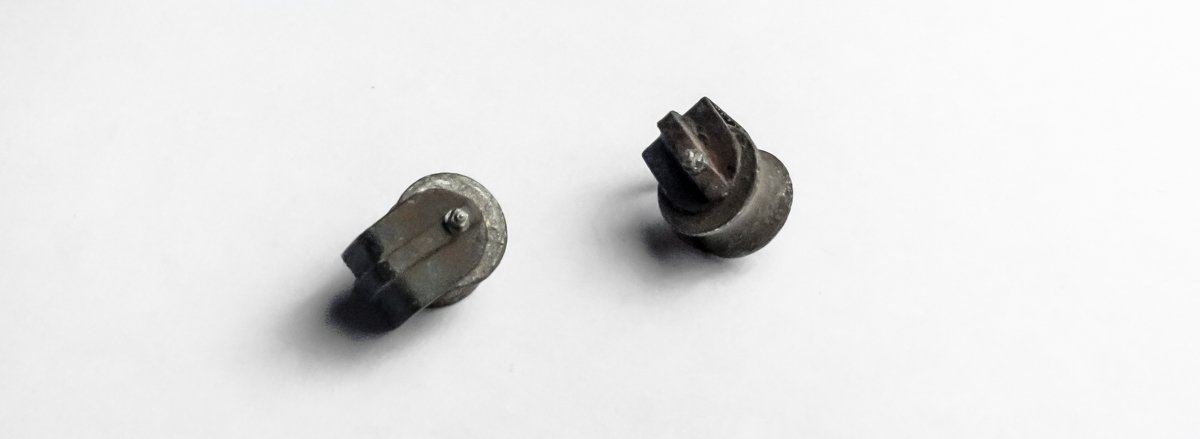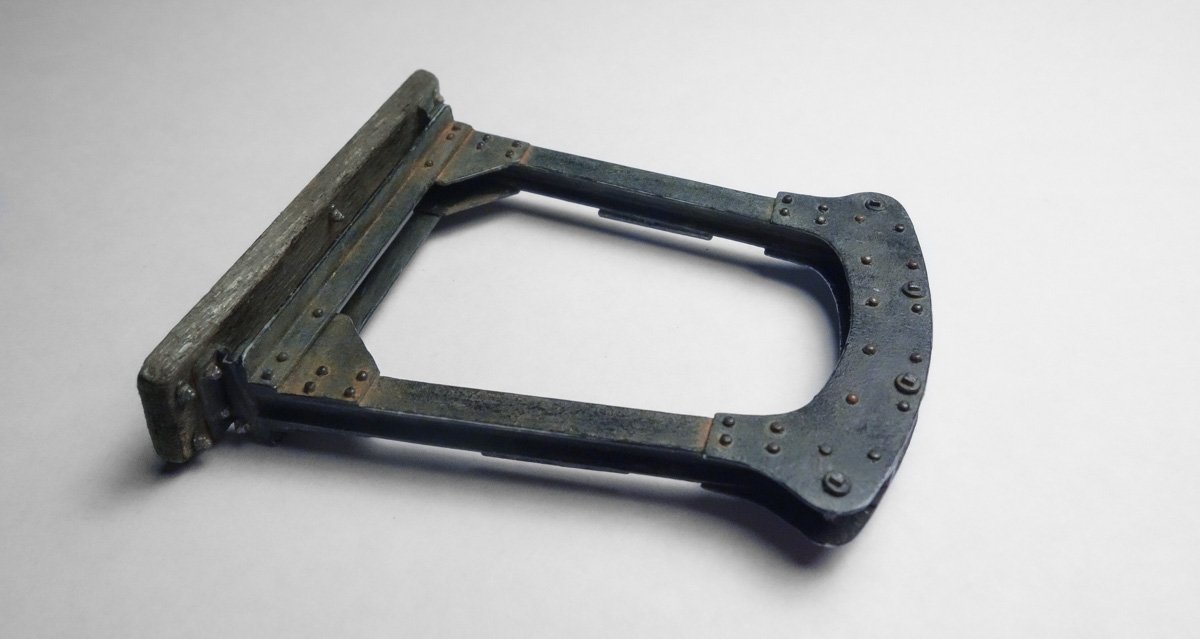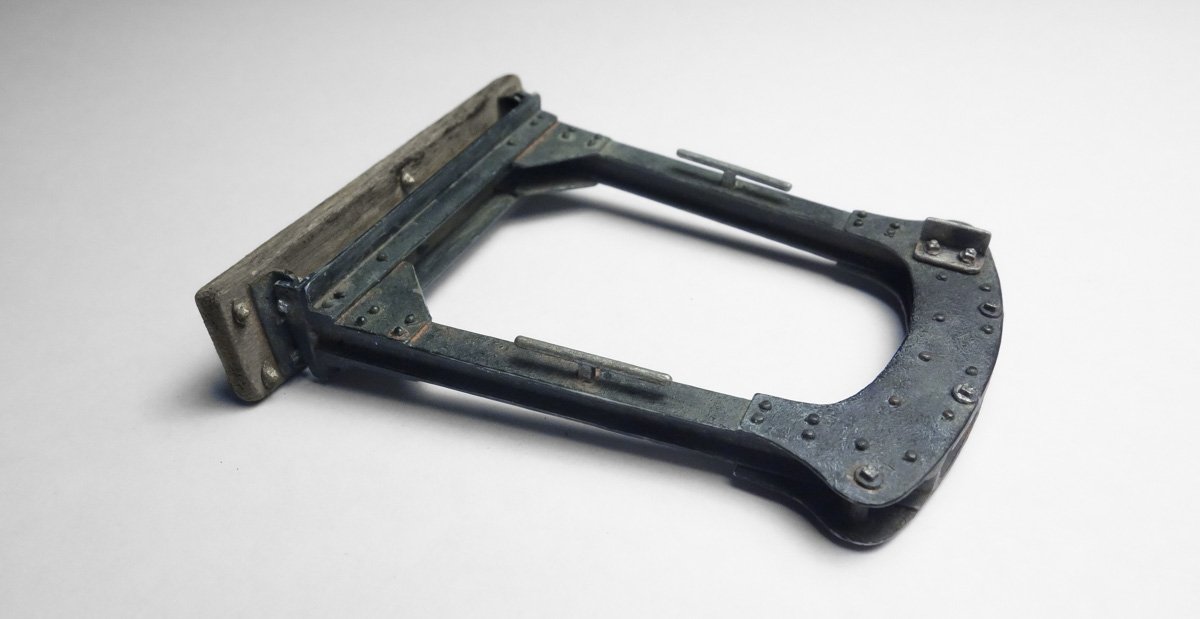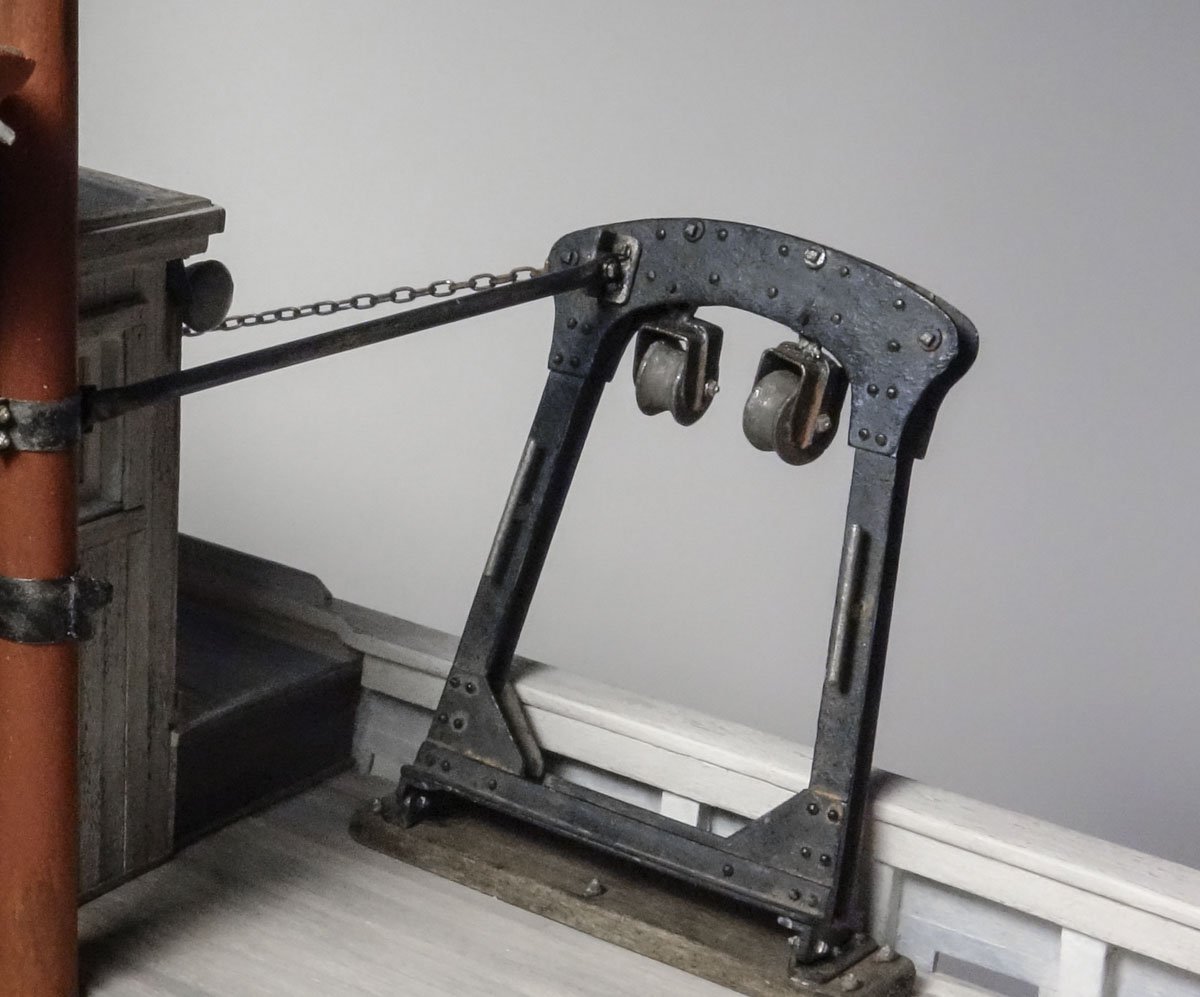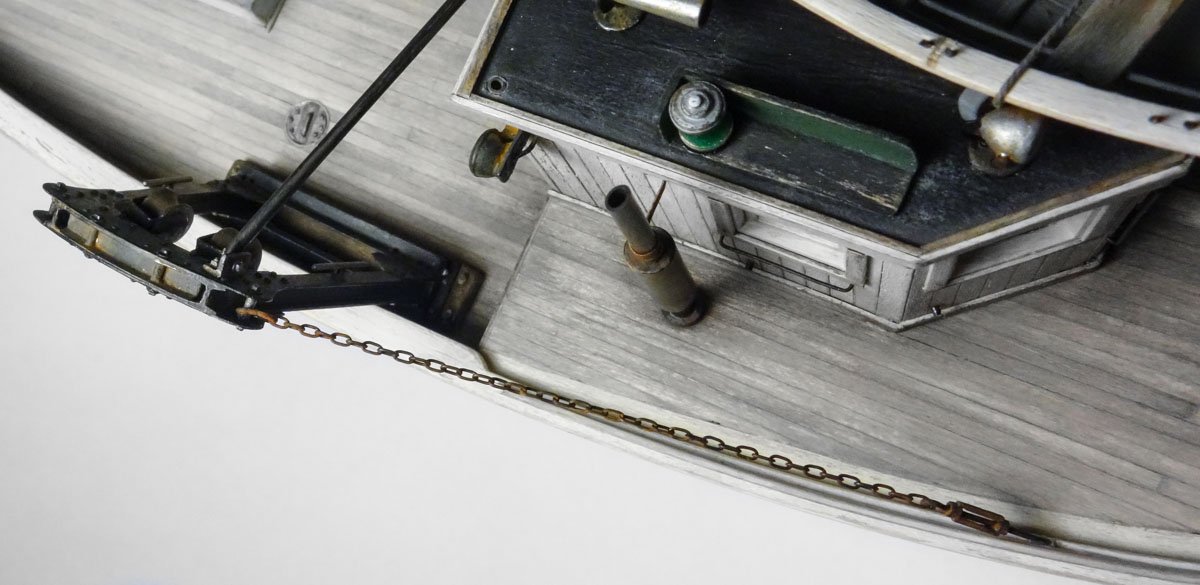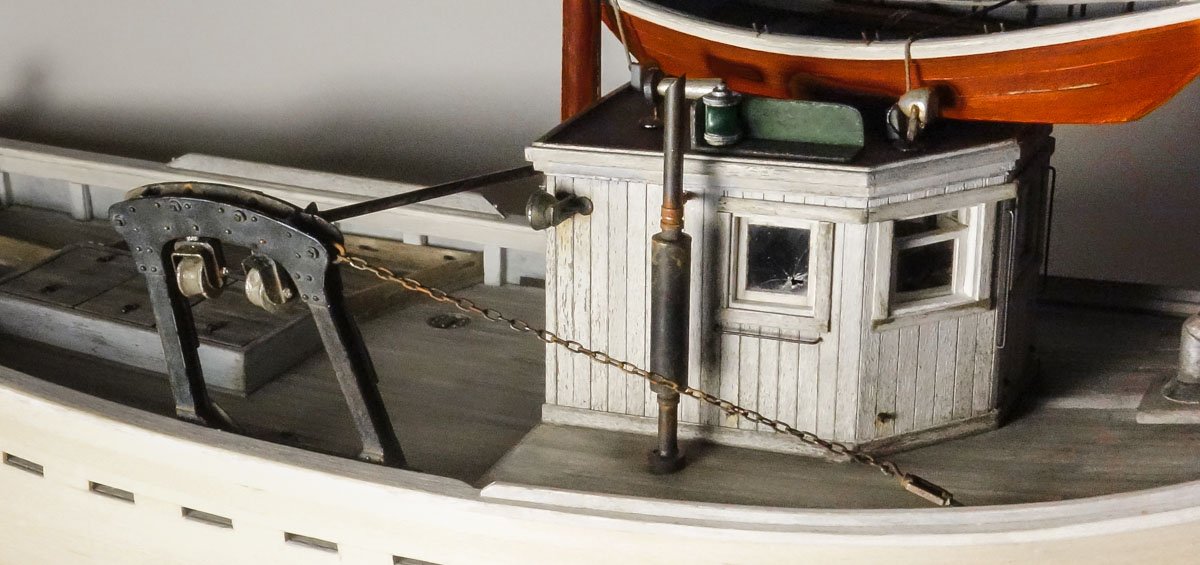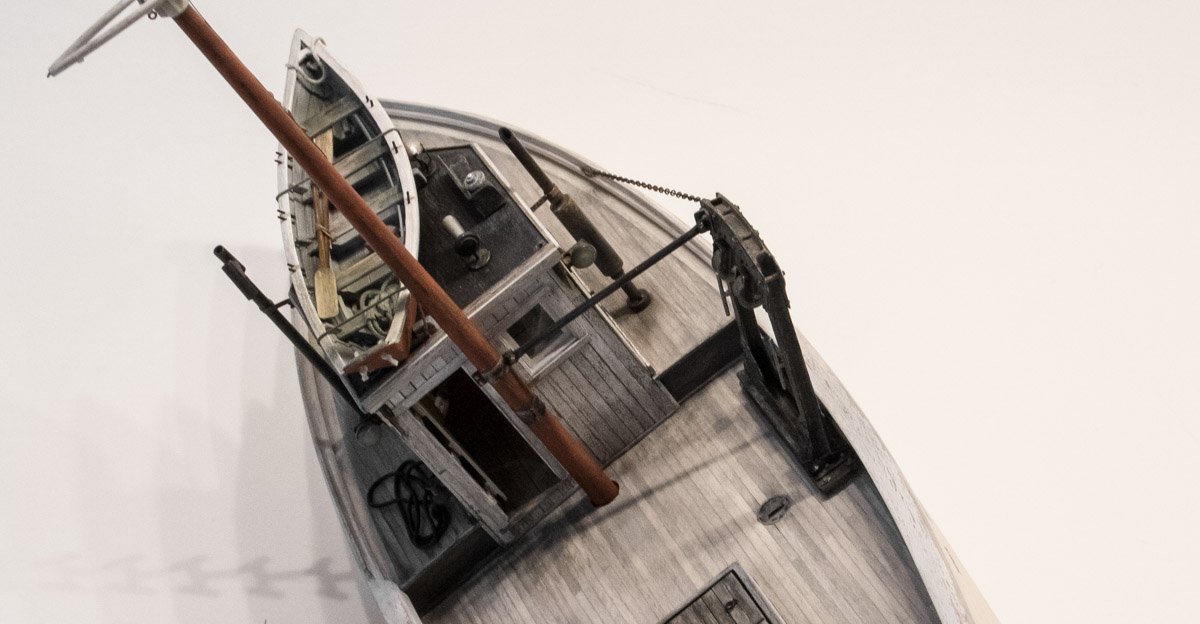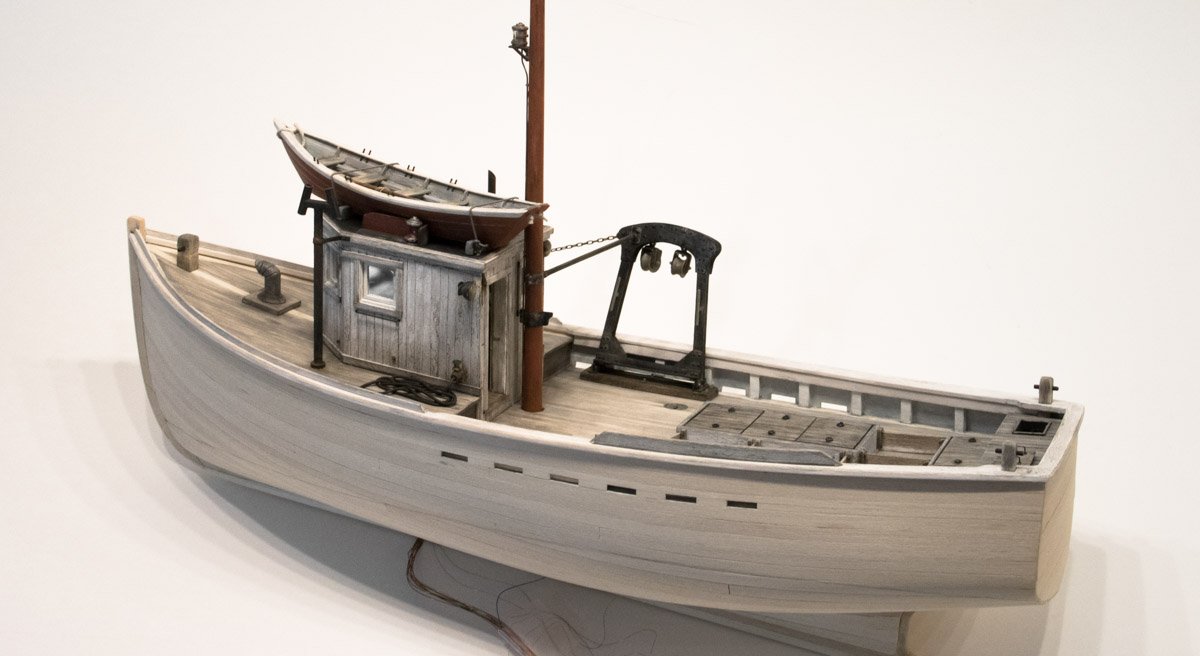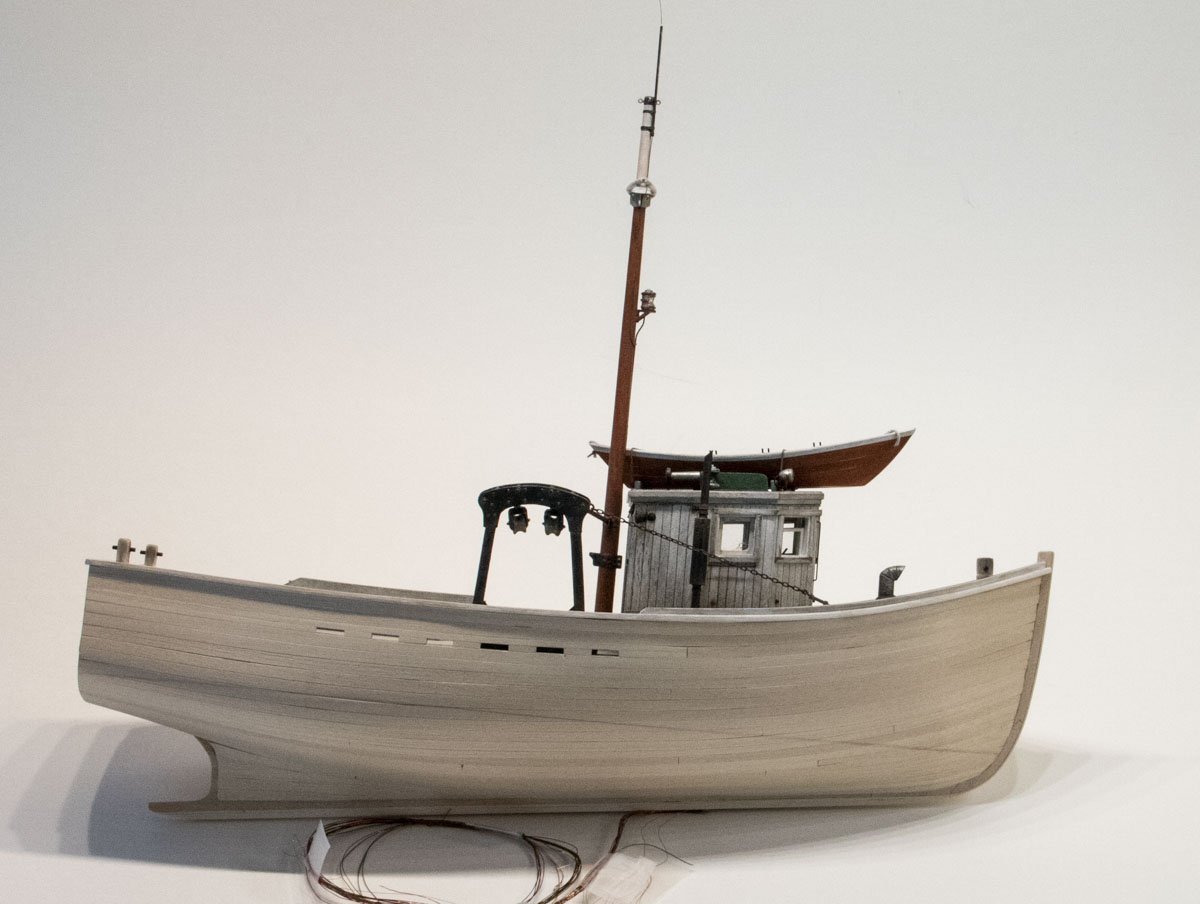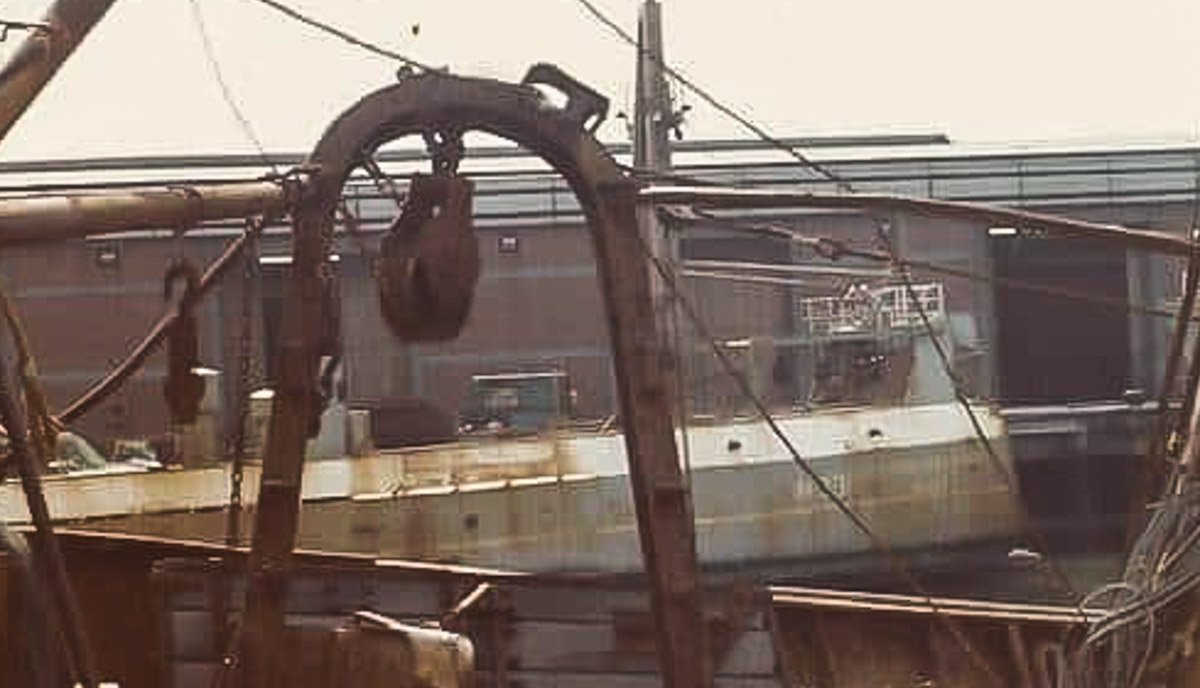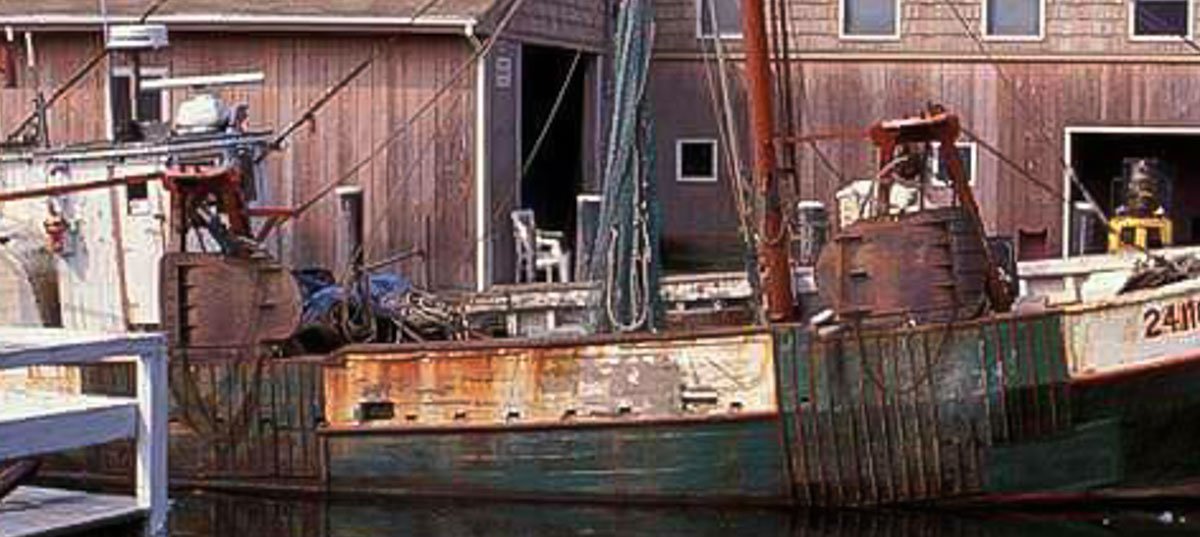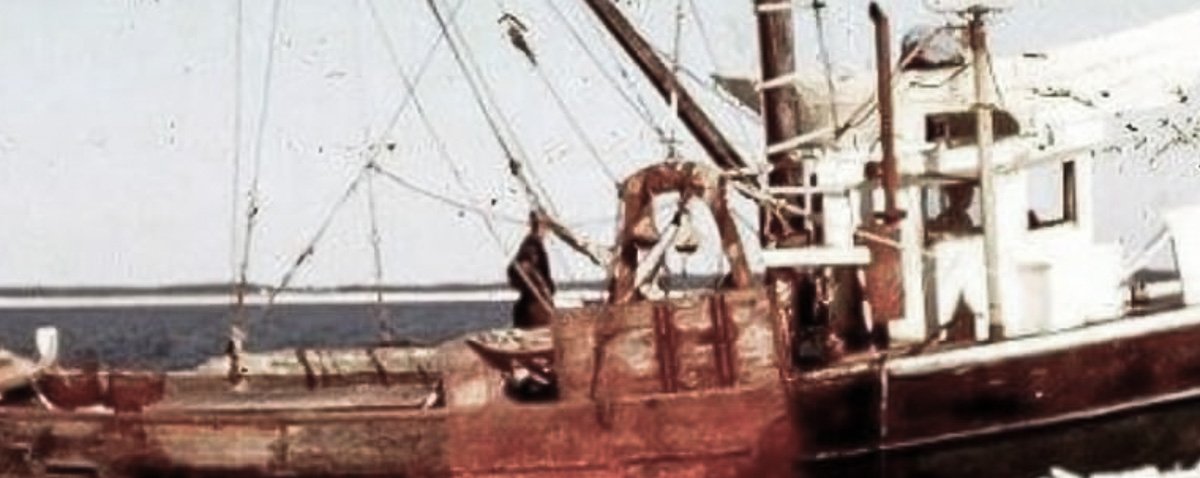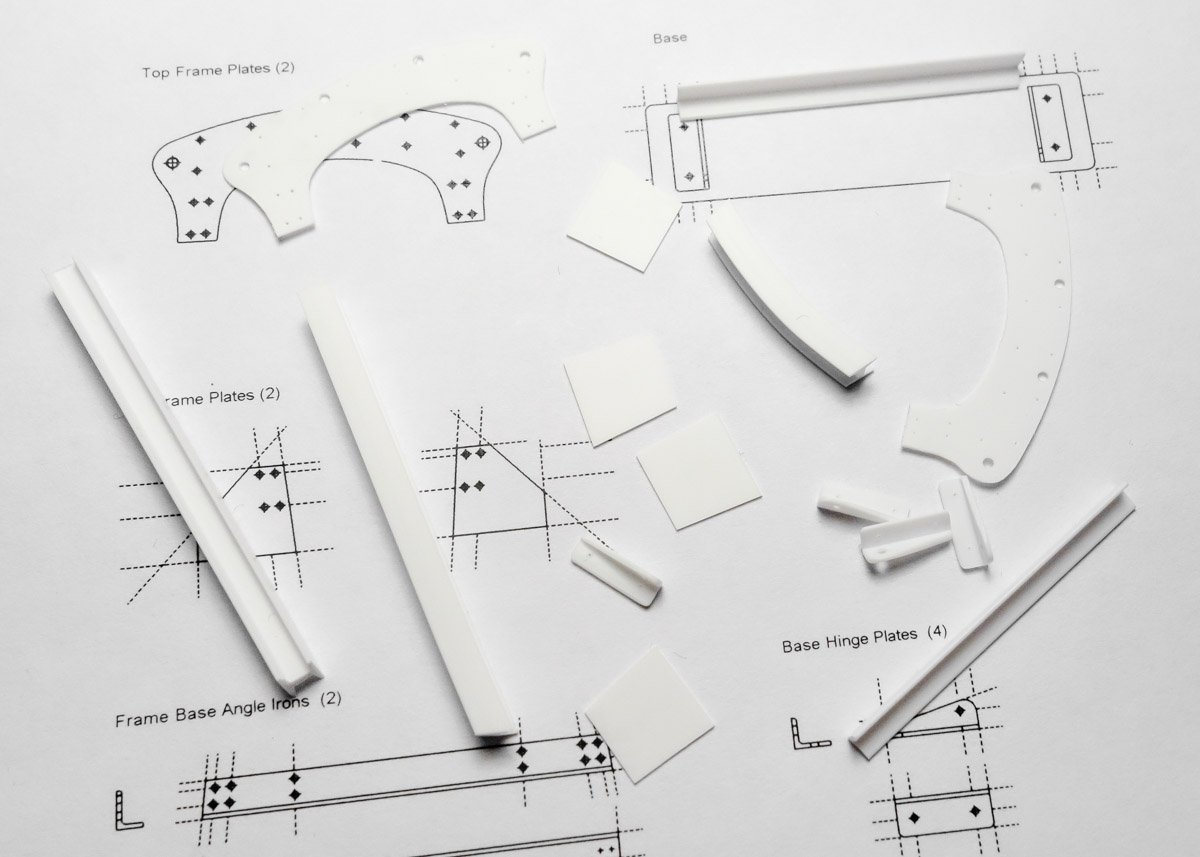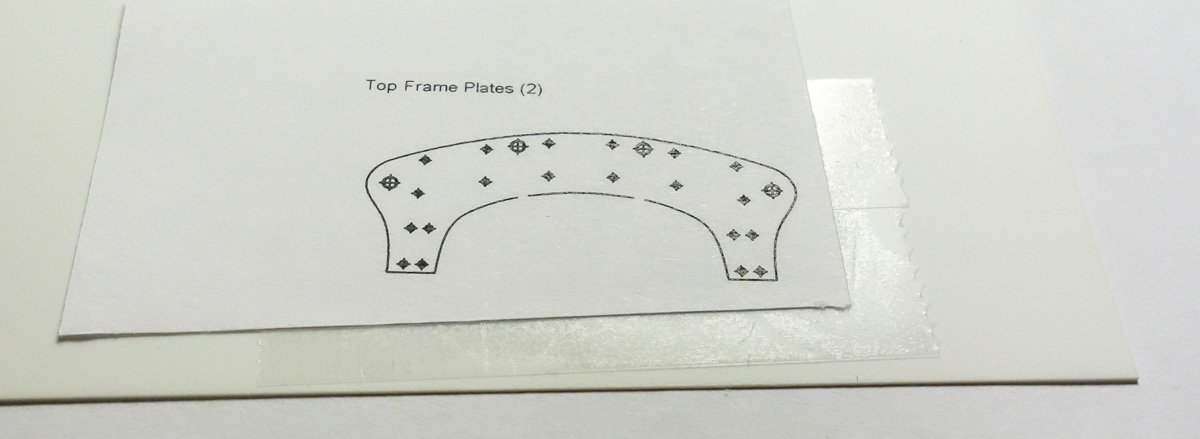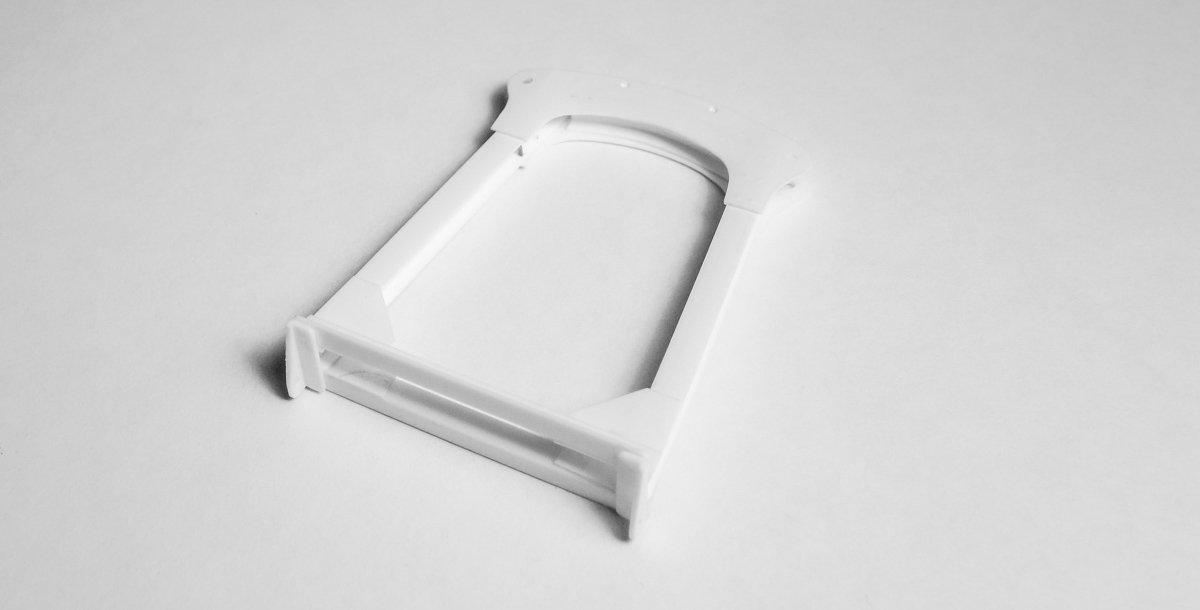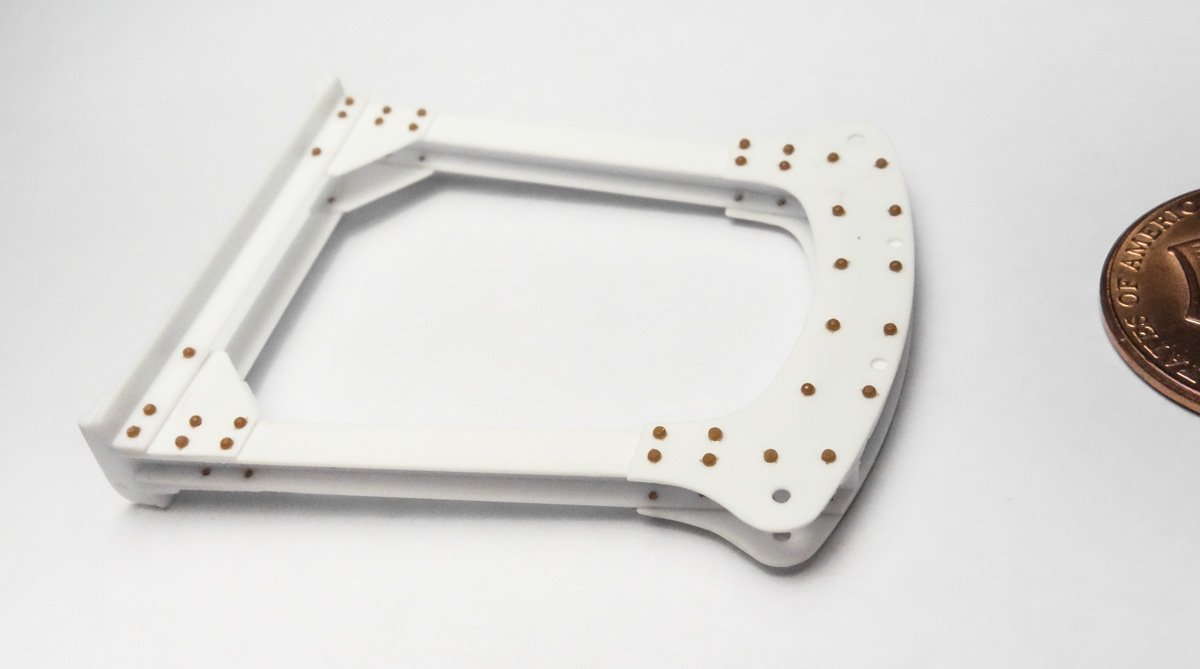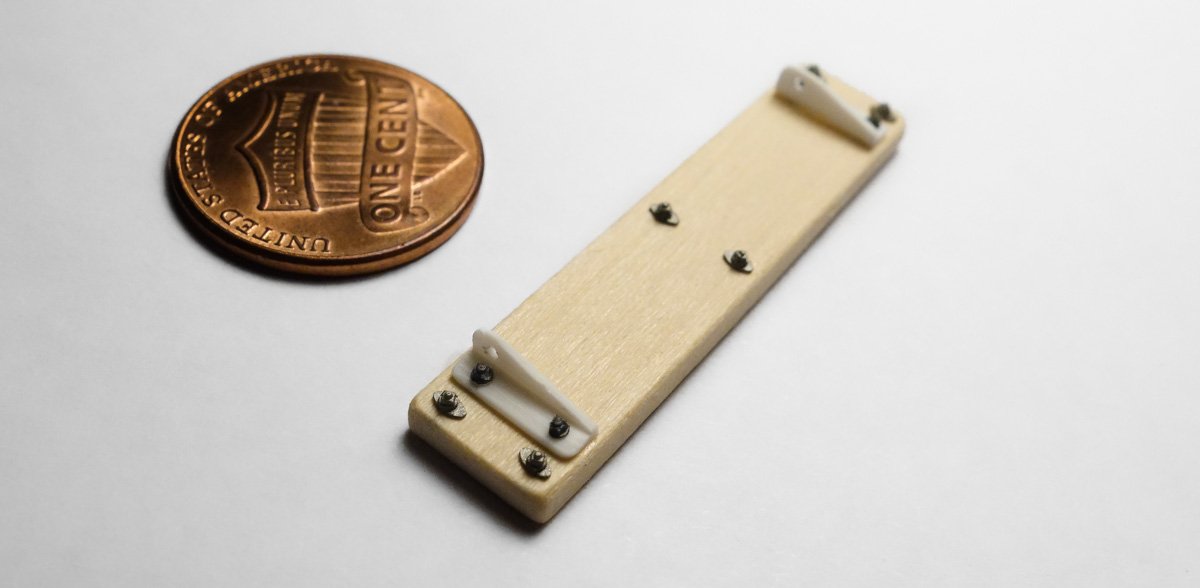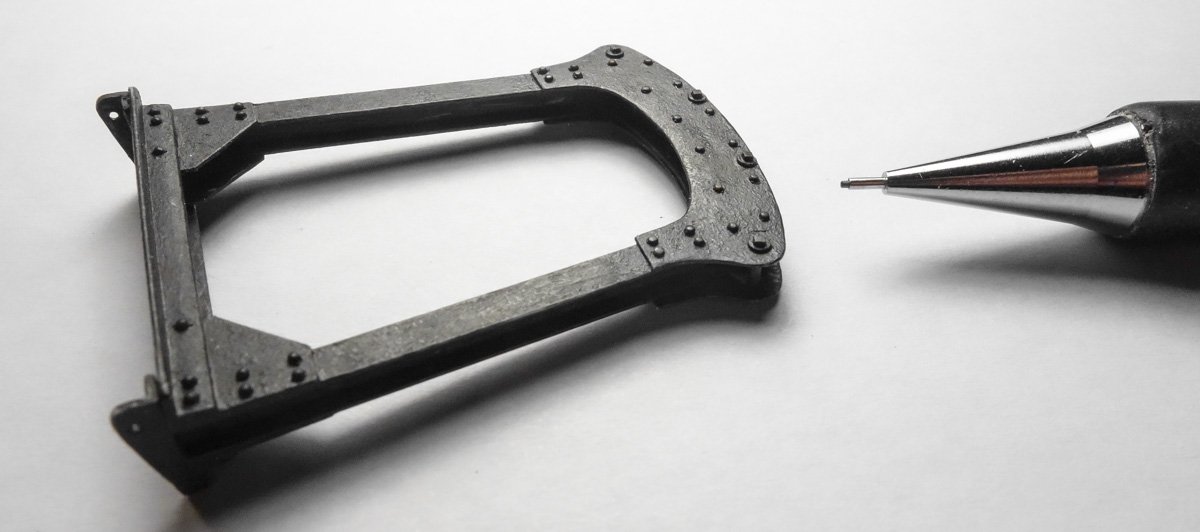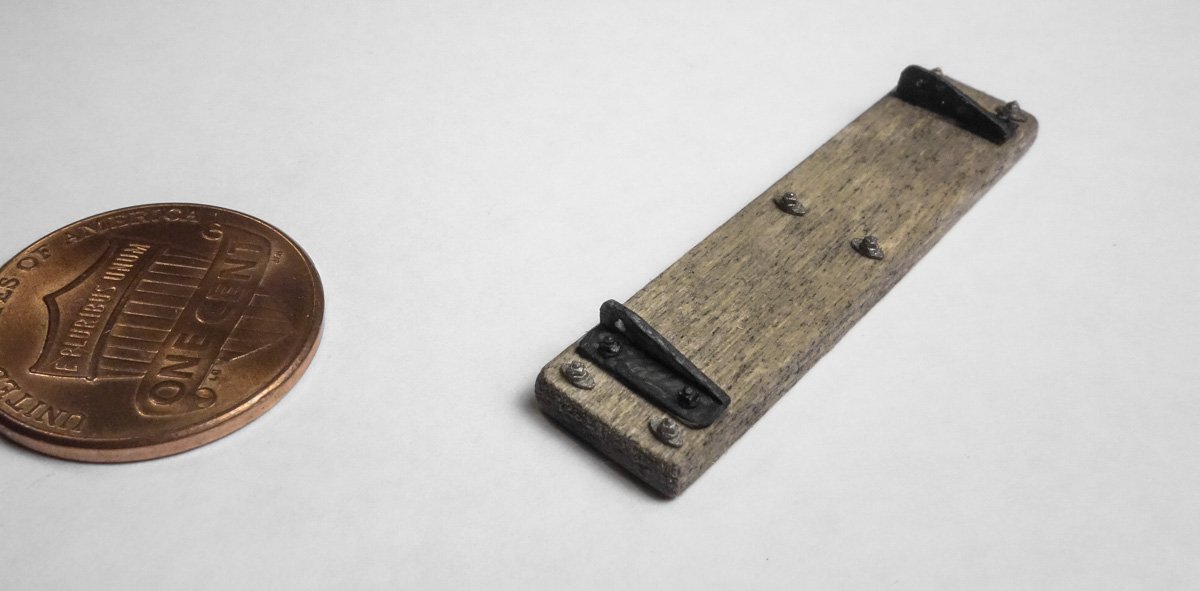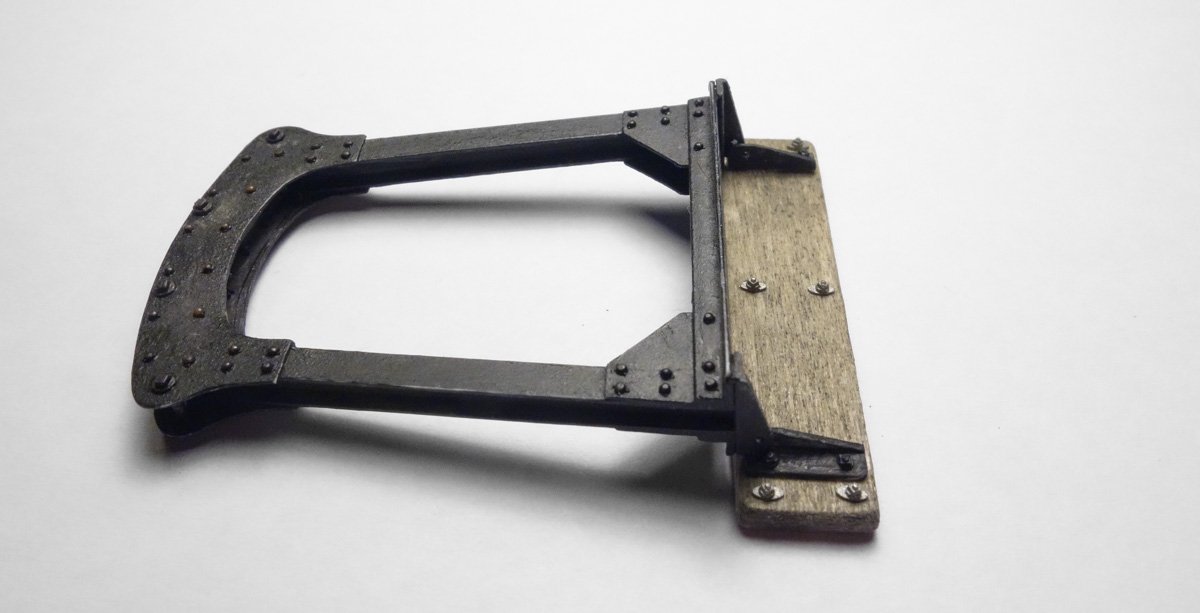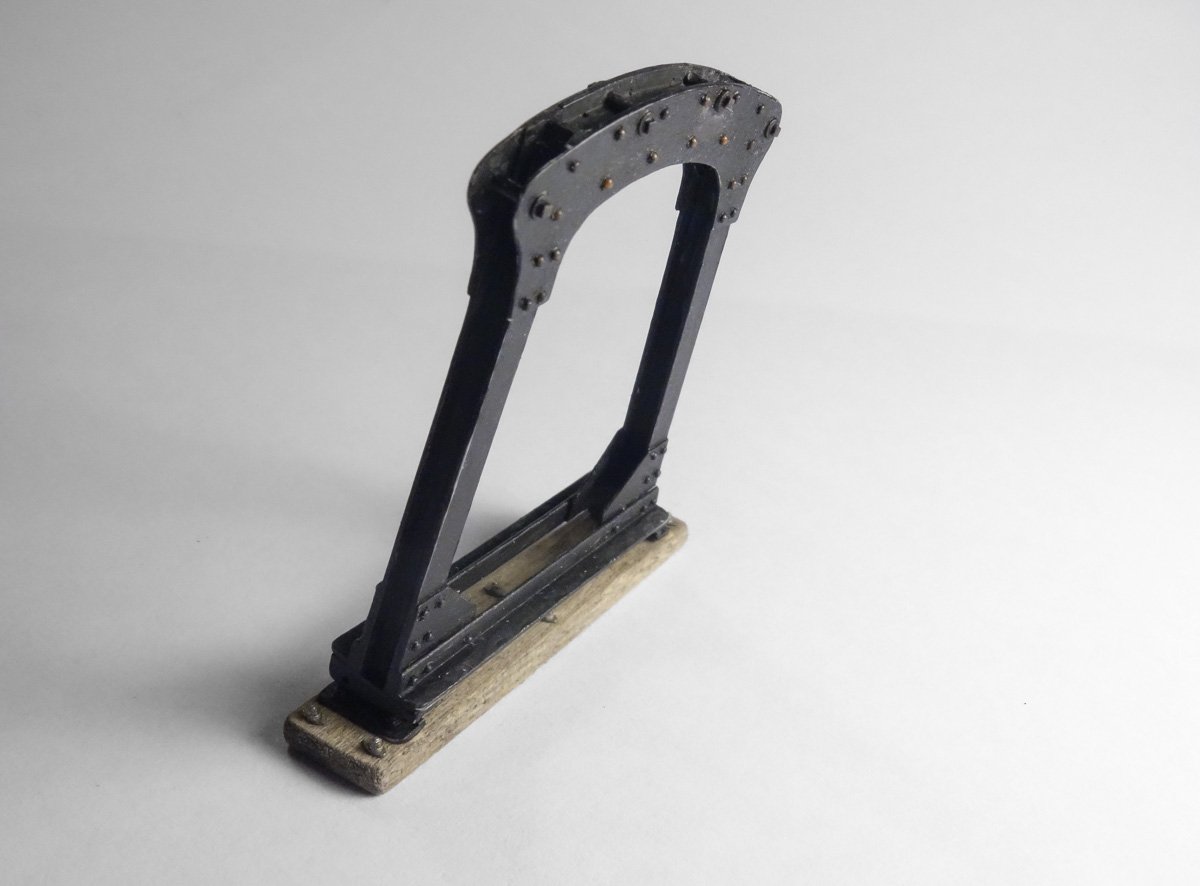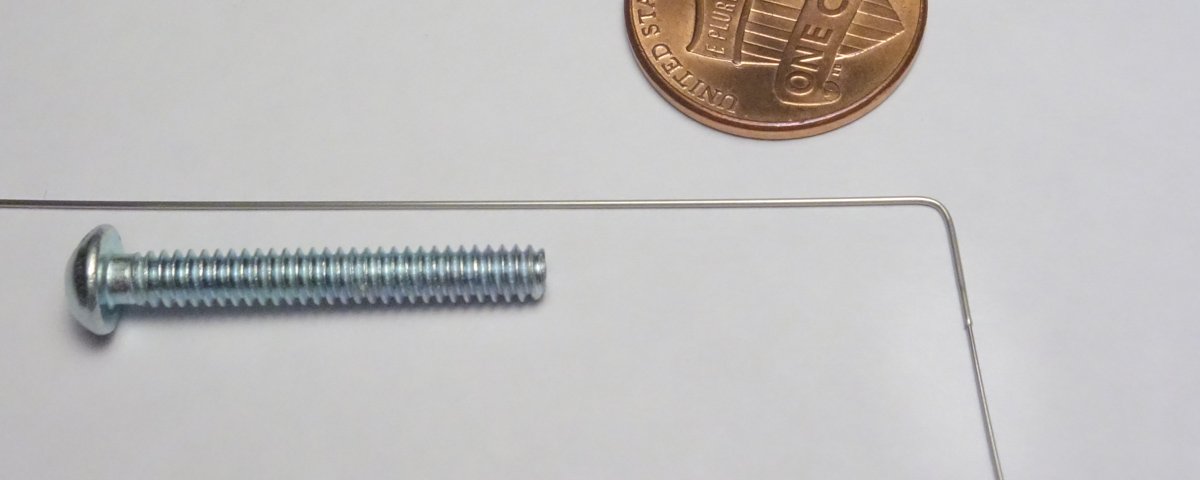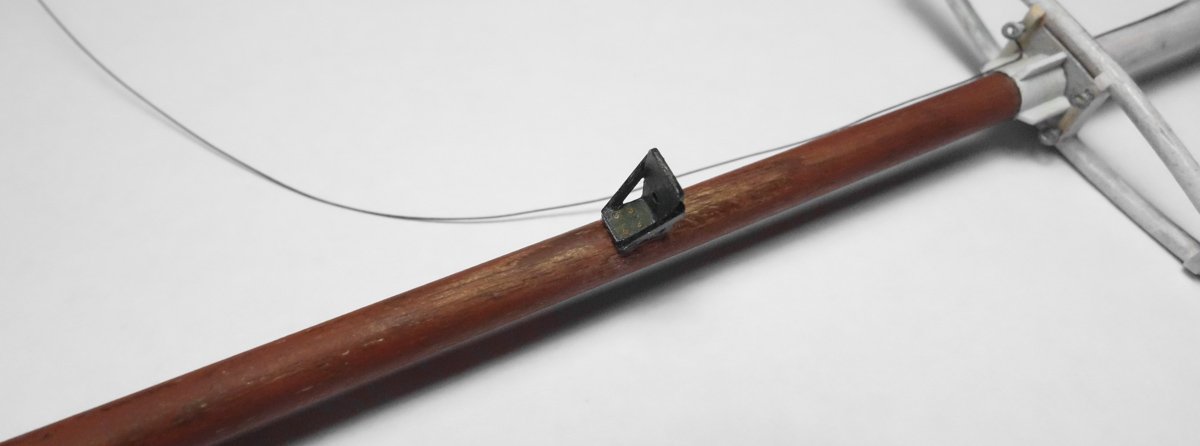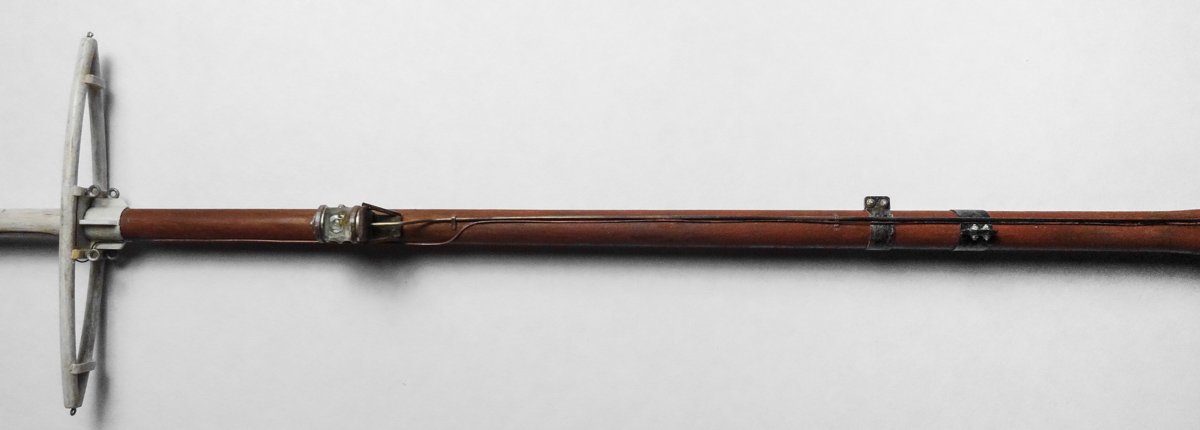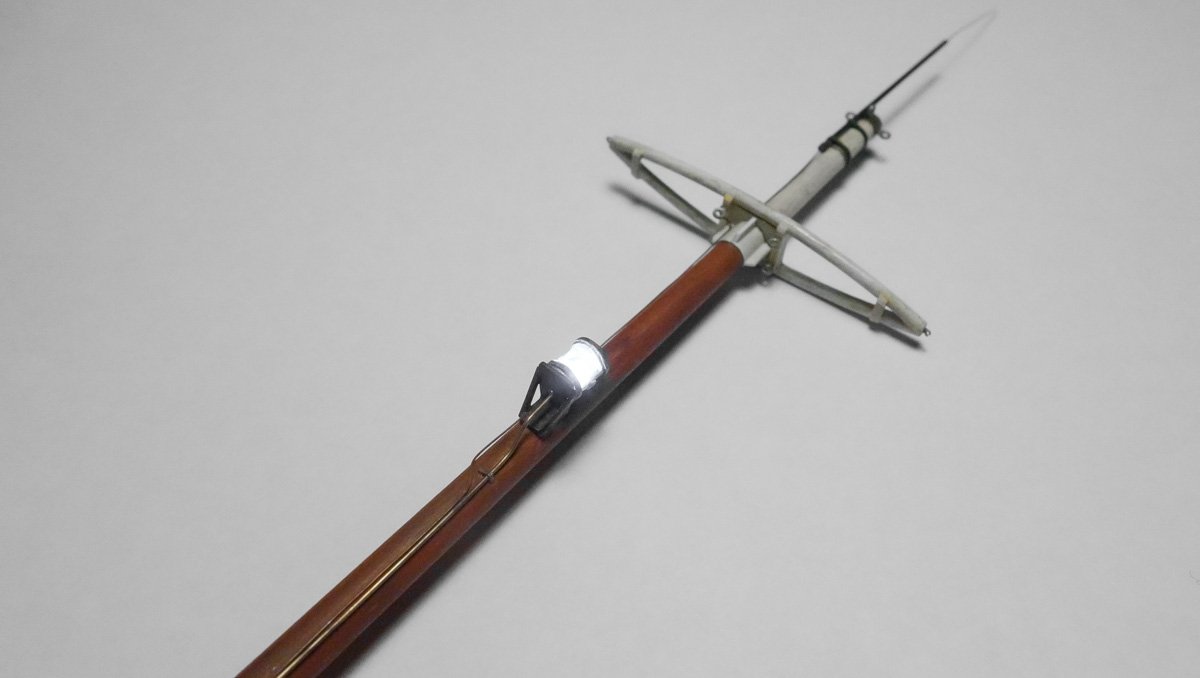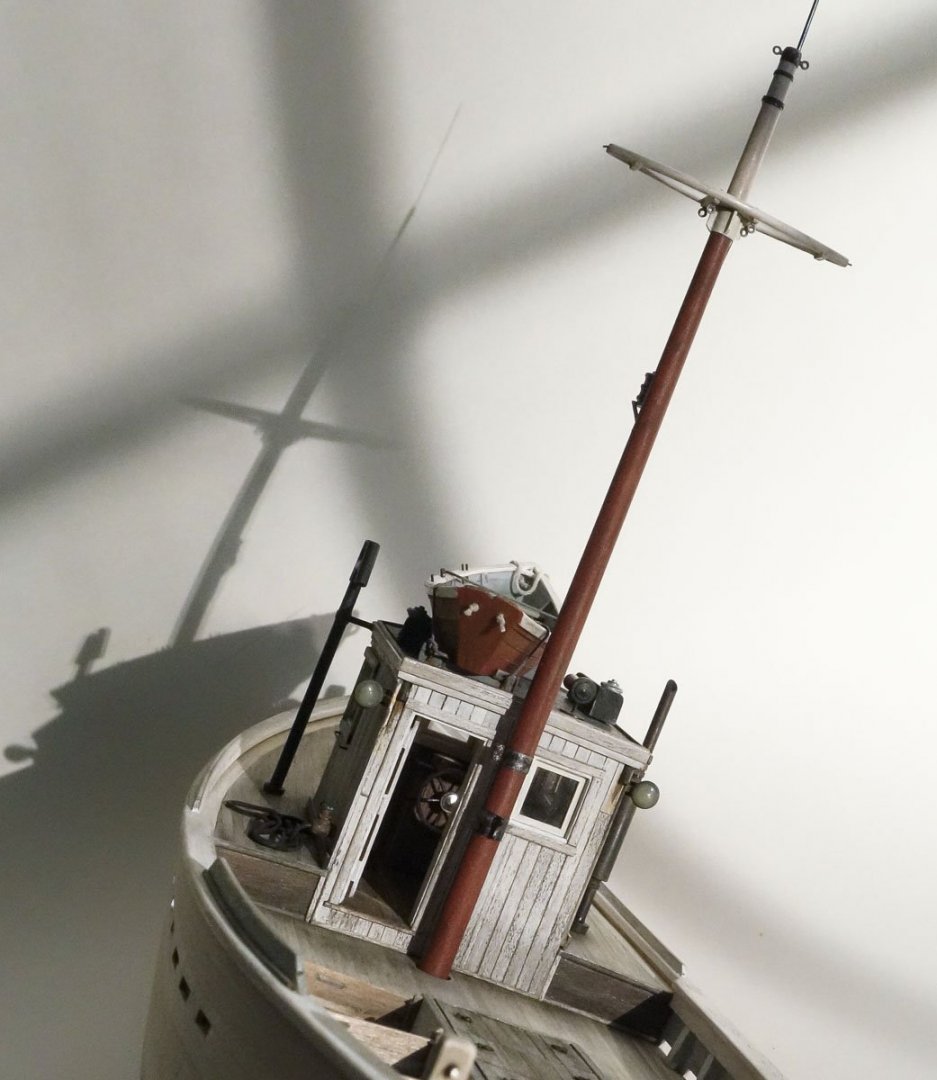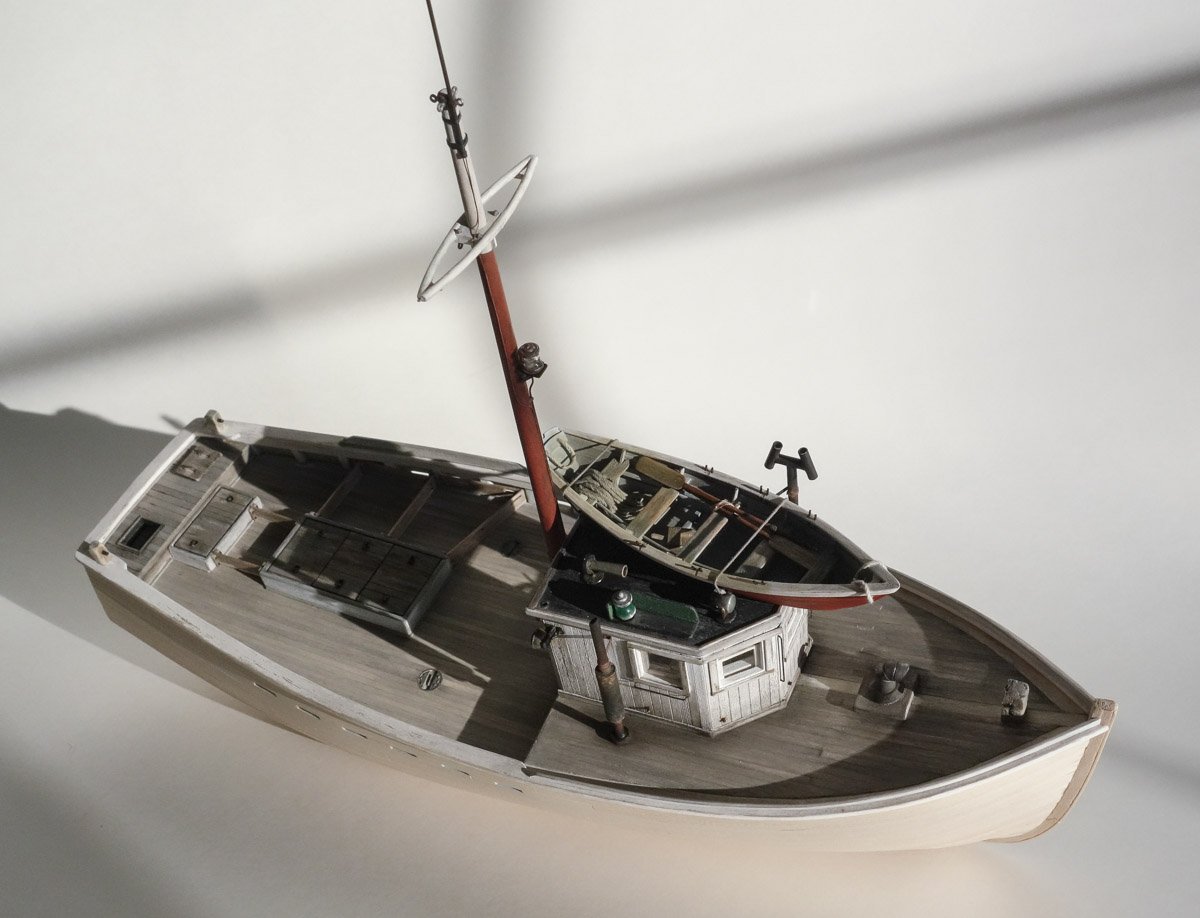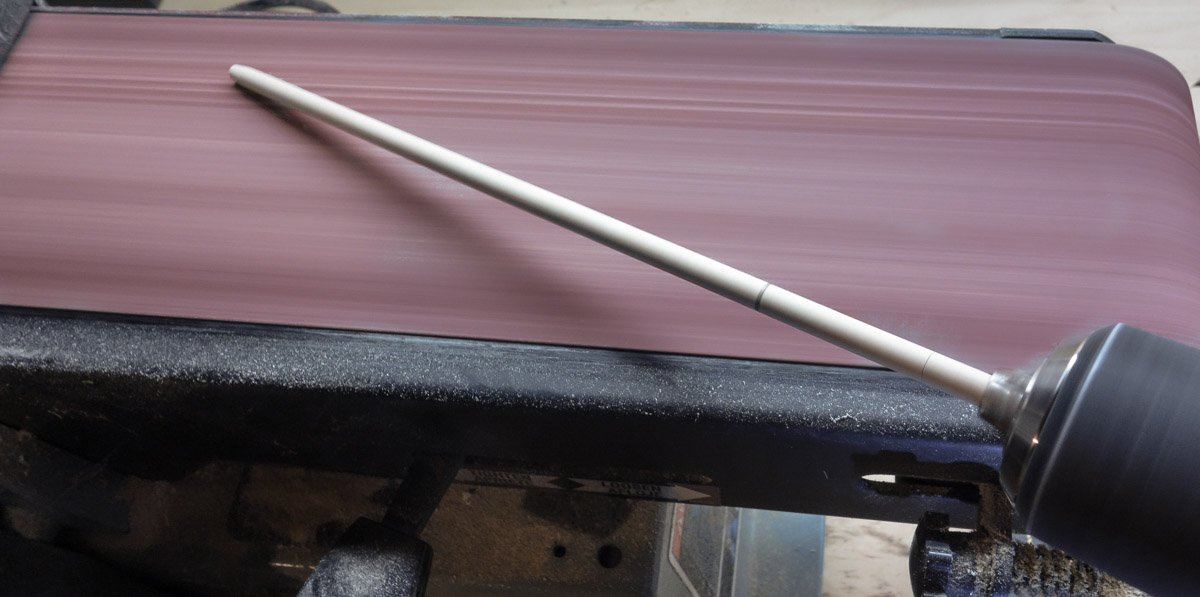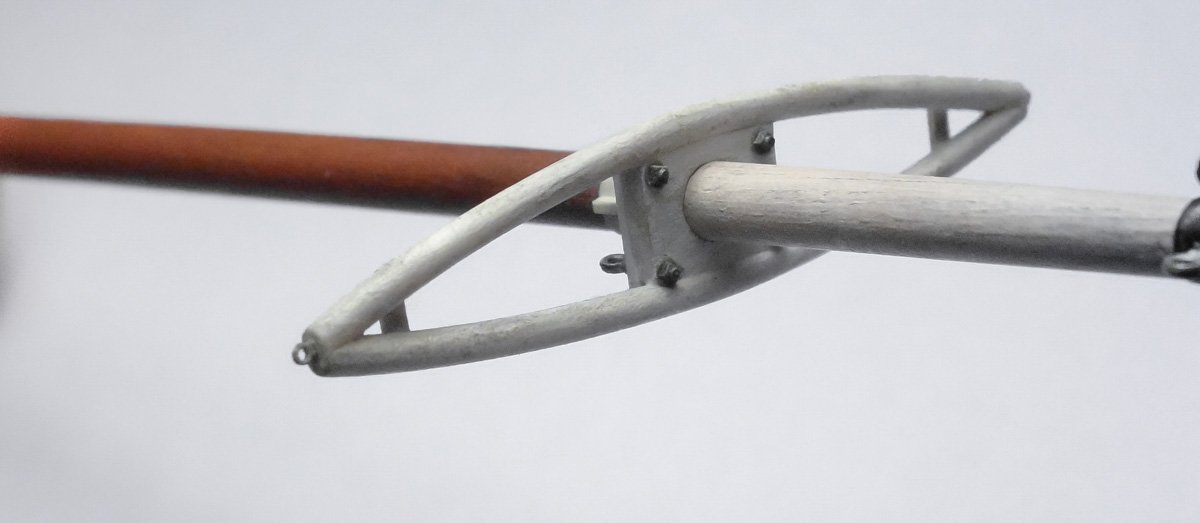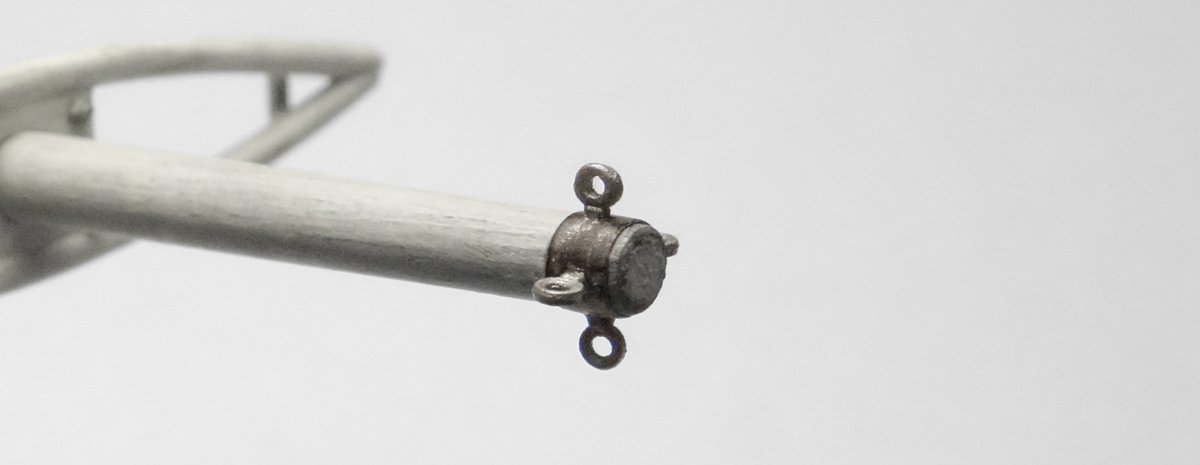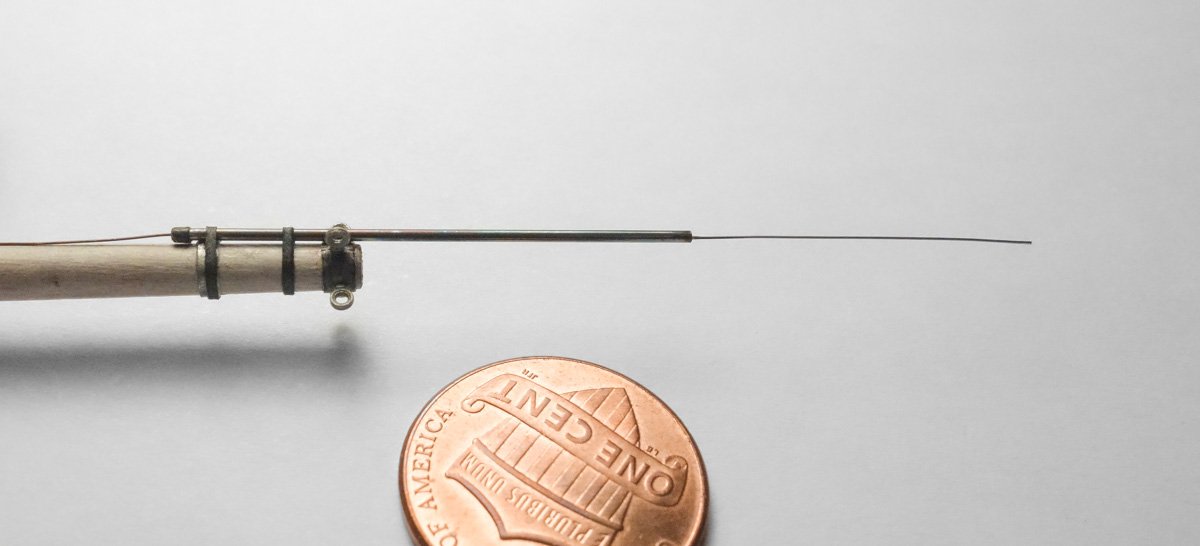-
Posts
1,357 -
Joined
-
Last visited
Content Type
Profiles
Forums
Gallery
Events
Everything posted by FriedClams
-
Very interesting log you have going here Vaddoc and a handsome subject vessel it is. I admire your CAD skills and perseverance in getting the drawings just so, and sInce you asked, I like the Swiss pear and birch combination for their tonal and grain qualities. The more prominent grain patterns of beech and cherry could possibly look out of scale. Looking forward to future updates. Gary
-
Terrific work on those globe valves Keith, and a nice exacting process for the bowsprit cutout. Top notch beautiful work as always. Gary
-
That really is quite a nest of chain, rope, hooks and eyes - but it turned out very nice Keith and neatly done. My experience has always been, that what ever time I predict any task or project will take, I should just double or triple it. It always looks easier in the imagining. Happy Holidays. Gary
-
Thank you John, Chris, G.L., Keith and Michael for your nice comments and support. And thanks to all for stopping in to take a look. Finishing the Gallows Frame Here is a small update on the dragger. Some cleats and an angle iron bracket for the mast brace were made from styrene and glued to the frame. A very thin wash of acrylic was applied to give it a barely perceptible hint of blue. Then a little rust and dust was added with pigment powders. The reverse side. The tow blocks are made from styrene and wood dowel. The pulley sheaves needed to be a scale 12” diameter so ¼” dowel worked out perfectly for this. Black primer and “steel" enamel along with a couple of dirty pigments completed the look. Blackened copper wire was bent into eyebolts and attached to the top of the tow blocks. These were then pinned into the gallows frame with brass rod and are allowed to dangle freely. The frame was glued to the deck and a short piece of brass tubing representing a 2” pipe brace is rigged between the frame and the mast. The deck surrounding the gallows frame will need some additional coloring and wear, but that will be done after the winch is made up and placed. This image below provides a good look at the forward support chain. I really like this miniature chain because it has elongated links like real chain. More often than not, tiny scale chain is comprised of links that are round (and sometimes flat) and doesn’t replicate real chain very well. This chain is pre-blackened, 15 links per inch, #29221 from A-line in California. A little rust colored pigment was added to the chain and turnbuckle. In this top view you can see how the support chain attaches to a post that is bolted between the two gallows frame head plates. The forward edge of the chain terminates at a turnbuckle. From there a rod penetrates the covering board at the same steep angle as the chain, and presumably bolts through a heavy timber below deck. And a couple more views. And finally, I would like to wish everyone a happy and peaceful holiday season. Gary
-
Your deck is looking great Keith - populated with small clean details. I do like your card method of symmetrically locating the plinths. Many times I've glued on tiny parts like these only to later find that they slid just slightly from position as pressure was applied. Resting the part up against the card edge would solve that problem as well as accurately locate it. A simple and clever solution. Thanks. Gary
-
Thanks for the additional information on your casting procedure G.L - I appreciate it. I can think of several applications where this type of mold casting would be useful. Gary
- 168 replies
-
Very nice detail with that metal keel G.L. The bar tin that you used - was that a 50/50 tin/lead or a lead free bar at 97% tin, with antimony/copper/silver? The reason I ask is because it seems to have flowed into your mold quite nicely. I would have expected lots of air bubbles and voids. Also, I noticed the wood plug you used to form the plaster mold is shiny. Did you slather the wood with petroleum jelly or something else as a release agent? Enjoying your log. Thanks Gary
- 168 replies
-
Thanks to everyone for looking in and for the likes - I appreciate it. Gallows Frame This model represents a fishing boat typical of its type in the 1920s. Details on boats from the 1940s or 50s may not be historically valid for the era of my model. I found this to be true when considering the gallows frame construction. It is easy to forget that a technology as commonplace today as arc welding, really hasn’t been around for all that long. Even though the first U.S. patent for arc welding was awarded in 1890, it was still in its infancy in the 1920s and many important improvements were years away. Steel joinery in the 1920s was mostly riveted, bolted together or forge welded. So construction of the gallows for this model will be riveted I-beam, angle iron and boilerplate - nothing welded. After looking at many gallows frames, I came to discover that no two are alike unless they were on the same boat. Evidently, there was no “Acme Gallows Frame Company" and every port had its own millwrights/smiths constructing frames for their own local needs. But the frames generally fall into two basic styles – the inverted "U" and what I call the three-piece Stonehenge. The photos below show these two styles. I apologize for the poor quality of the images. With some uncertainty I decided on a modified Stonehenge design. One criteria for the frame was that it be strong enough to support both towing blocks. Most trawl fishing boats carry two frames - one for each block, each towing one door (otter board). Photos of 1920s Western-Rig Stonington boats are rare and ones detailing trawling hardware are all but non-existent. But this photo (1950s?) shows what I believe makes realistic mechanical sense in terms of size and heft for a two-block frame. I drew up the frame below using the above photo as a guide to what I wanted the end result to look like. The overall dimensions of the frame and the size of the steel used to build it, came from referencing photos of newer boats and a drawing of a 1920s auxiliary fishing schooner. The towing blocks in the drawing may seem quite large, but it matches what I found were actually used. The pulleys alone are 12” in diameter and had to handle both wire cable and chain. Consider the strain these blocks had to withstand reeling in tons of fish in a net that trailed a mile behind the boat. The forces on the blocks, frame and the boat in general must have been enormous when the net gear snagged ledge or rock outcrop. But still, when I get around to making the blocks, I’ll scale the size back if they just look too large. I then pull apart the drawing and make cutting templates for the individual pieces. The frame I-beams. The gusset plates and angle iron. And finally the top frame head plates and base. All the small center marks indicate rivet or bolt locations. The pieces are cut from styrene and a dressers' pin is used to mark the rivet/bolt locations. The only fussy pieces to cut were the two head plates. Double-sided tape was placed on the sheet styrene and the template placed on top of that, then cut through with a scalpel and finished off with needle files. Everything is assembled. Holes are drilled at all rivet locations and styrene rivets glued in. The rivets scale to 1.25” in diameter. The base is made and styrene N/B/Ws are added. The frame is painted flat black enamel. This is only a base coat and additional washes and weathering will be applied later. The frame base is stained and the hinge plates and nuts are painted. This also is just a base color. Here the frame is temporarily placed on the base. Why the builders of these gallows went through the trouble of making them hinge and swing down flat is a mystery to me. In every photo I have seen of these frames they are shown chained, braced with iron pipe, and in one way or another reinforced to prevent collapse and from being torn off the boat. They appear to have never once been moved since the day they were installed. But there must have been a good reason for installing hinge plates. Standing up and leaning forward in the dragging position. Still to be done are the tow blocks and their attachment points on the gallows, some frame cleats and the rear brace that secures it to the mast. Also some chain reinforcing. The last step will be to add a color wash then weathering and rust the whole mess. It needs to look worn and worked hard before it is placed on the boat. Thanks for swinging by. Gary
-
What an insightful observation G.L. and it put a smile on my face first thing this morning. I think most people love small boats. Perhaps it has something to do with childhood and remembering the first time you tentatively stepped barefoot into a row boat on a summer morning in a world without cares. The oar lock plates are an elegant detail and I like the sheet traveler as well. Gary
-
Hello Eric, I’ve been reading your build log from the beginning over a few sessions and just now caught up. This is a very interesting subject and your model is looking great. I love the look, history and nostalgia of these old steamboats. Every time I see an image of one, I can’t help but think of Mark Twain and his wonderful book “Life on the Mississippi”. Your log is both fun and educational. I look forward to future updates. Gary
- 599 replies
-
- sidewheeler
- arabia
-
(and 4 more)
Tagged with:
-
Just came across your log Michael and I wanted to state, as others have, how fantastic I find your work. You are a true craftsman and artist - from the sculpted figures to your precise engineering and machine work. Wonderful work (like all your work). Thanks for showing us the process. Oh - and a great garden railway also. Gary
-
Thanks for the information Clare. These cutters look like they open up some interesting modeling opportunities and I like how you're using yours. All those little accents, the diamonds and rectangles would be a bear to produce manually and uniformly. Maybe I'll take a look at the Cricket Maker. Agree totally. That is strange - sort of makes me suspicious. Keep up the great work and thanks again. Gary
-
Beautiful work you’re doing here Clare. Such an exotic looking vessel to my Western eyes. That is an interesting cutter. I was wondering what the thickness of the vinyl is minus the transfer material. I’m assuming it accepts sheet goods and not materials off rolls. If so, do you feel it would be able to cut .010” or maybe .020” styrene sheet? A very interesting and educational log. I look forward to future updates. Gary
-
Thanks for the information on this supplier Wefalck, Sounds interesting and I'm going to check them out. Hello Roger I apprenticed as an electrician in the early 1970s and took the Journeyman’s exam in 1975. One of the questions on the exam went something like “what are the acceptable raceways for use on commercial marine vessels". I answered GRC (galvanized rigid conduit). I passed the exam but got that question wrong. The issue as I recall is the possibility of free conductors slapping around inside a metal pipe on a pitching and rolling ship. Insulation is very vulnerable to chaffing wherever movement or vibration occurs and especially at points where the orientation changes from vertical to horizontal - at bends in the conduit, fittings, elbows, etc. This situation could easily cause systems failure or worse – fire. Corrosion is also a problem. I have been away from electrical construction work for decades and I have never been involved in any marine wiring, so I don’t know the codes or wiring systems that were or are being used. But considering the vital nature of modern electrical/electronic systems on today’s ships, I’m sure the electrical systems are rock solid and nothing is flopping around. Thanks for checking out my log. Thanks Keith. Gary
-
Thank you Keith and Druxey for your kind comments. Ands thanks to all for stopping in. Sorry John, I'm not licensed in Australia. Thanks for looking in. Hello Mark Thanks for the comment and the idea of using the tubing itself as a return conductor. That's a good idea, but as Wefalck stated, soldering copper onto stainless steel would be a challenge, especially keeping in mind the size of this material. By using these very fine wires I am able to run up to six wires through the tubing, so I'm not limiting myself in what I can do. In most cases there is a work around and the tubing isn’t needed at all. For instance, here I could have built a mast with a hollow down the middle, ran the wiring up the center and into the back of the light fixture, and a brass wire could simulate the conduit. But that is more time consuming than soldering on the fine wires so it wouldn’t have saved me anything. The desire to use this small tubing is a result of situations where there is no work around and I can’t conceal the wiring. Pendant lighting hanging from above, a gooseneck style light over a doorway, or sign illumination on the exterior of buildings are a few examples of what I mean. Mostly non-boat/ship modeling, but once the soldering technique was worked out, the work around became unnecessary. Thanks again Mark Hello Wefalck Brass in these sizes would be nice to have available and one could blacken them easily. I'll have to do a net search following the chromatography path! Thanks Wefalck. Gary
-
Thank you Druxey, John, Keith, Chris, Jim, Michael and Tom for your fine comments and continuing support. I appreciate it. And thanks to all for stopping in to take a look and hitting the thumbs up. More Mast Stuff Time to make up the mast navigation light and then place the mast on the boat. The NAV light will be functional and the wires for the LEDs will be run through stainless tubing up the front of the mast. Half-inch trade size electrical conduit has an outside diameter of .84”. In 1:48 that is .0175”, and it just so happens that I have tubing with an OD of .018”. Running conduit for wiring in marine applications even back in the 1920s was probably a code violation and required something like mineral insulated cable. MI cable is round but somewhat smaller in diameter than conduit, so this tubing will pass for either, and I don’t know where to obtain tubing smaller than this anyway. This stainless tubing is seriously small. It has a .002” wall thickness with a .013" ID. There is no visible seam and it is straight and smooth inside and out. As I understand it, this tubing is manufactured for instrumentation and medical equipment and it comes in a variety of sizes. Because the NAV light sits out from the mast, I need to bend an offset into the tubing. The wire sticking out the tubing is just a #34 magnet wire that I’ll use for pulling through the LED wiring. The process of bending the tubing is simple. A stainless wire that nearly fills the inside cross sectional area is inserted into the tubing and this keeps the sidewall from collapsing during bending. The radius is obtained by wrapping it around an appropriately sized machine screw being careful to keep the tubing pressed tightly into the threads. The thread walls act as a bending shoe and helps keep the tubing from blowing outwards. The example bend below shows the stainless wire inserted and how much spring back can be expected in a simple 90-degree bend. The insertion wire was pushed in just far enough to clear the bend. Had I simply pushed the wire all the way in and out the other end of the tube, I probably wouldn't have been able to pull it back out. Here is the problem with using small tubing like this for running LED wires. The wires on pre-wired LEDs aren’t fine enough to fit through the scale pipe. Even the smallest LED with the finest wiring I have been able to find won’t fit through. It may look close in the image below, but it isn't. Even with the wires untwisted and straightened – no. And in some modeling situations, you may want to run more than a single pair of wires through the tubing. So I solder my own surface mount LEDs with very fine wire, which also provides me with the luxury of deciding how long I want the leads to be without having to solder on wire extensions. When first confronted with the task of actually soldering wires on to these tiny things, it seems utterly impossible, even ridiculous. But once I got my technique down, I found it surprisingly simple and that I could succeed almost every try - even with the smallest diodes. And the LEDs are literally one or two cents apiece when bought off the reel, so tossing away a few mistakes is painless. I'd be happy to show the process on soldering these if there is any interest. Below are the most common sizes I use. For this NAV beacon, I’m using the 0603 – the mid size one on the right. The wire used is #39 gauge magnet wire. Including film insulation the OD is .0039”. The LED is placed into the light fixture and filled with clear Gallery Glass. I previously made the light fixture when I made up the wheelhouse NAV lights - that process it is shown on page 3, post #86. The bracket to hold the NAV beacon is made up from styrene, painted and attached to the mast. The tubing is glued onto the mast and a couple of foil “pipe clamps” are added. The light wires are pulled into the tubing and the beacon is glued on to the bracket. The wire from the radio antenna is routed down along side the tubing. Some pigment power is used to repair and touch-up scuffed areas. A quick check to make sure the thing still lights before the mast is set. I am going to hold off on the boom, mast cleats and the mast coat until after the gallows and winch are made up and placed. Next comes the gallows frame. Thanks for stopping in to take a look. Gary
-
Hello Keith. Just found this log and have enjoyed reading through it. This is an interesting subject and the model is coming along very nicely indeed. I like the cannons (wheels too), and the control pedestal is crazy detailed at such a small size. I also like the color of the deck and the overall feel of the model. Your decision to redo the masts I believe was a good one and the replacements look great and to scale. I couldn’t agree with your philosophy more Keith - perfectly stated, and that is how I approach my own models. It’s like we’re brothers from different mothers. Looking forward to future updates. Gary
-
This is so sad to see happen. I've pulled up a front row seat for this build log G.L. A great idea and I know I will learn a lot from it. Gary
- 168 replies
-
Excellent work on these small brass details G.L. I find small open boats so appealing and your model here is very nicely done - every detail. A pleasure to watch it come together. Gary
-
Thanks to all for looking in and for the likes. Hello Druxey. Yes I'll keep that in mind, but does your household qualify as a non-profit organization? Hey Tom. That's a very cool and helpful site. Thanks for the link. Some mast stuff I want to begin building the gallows frame, but because it has a supporting brace that attaches to the mast, I need to make up the mast and get it placed first. But I won’t be stringing any stays or shrouds just yet. The mast on this boat is 25.5’, which is slightly over 6.25” in 1:48. The boom is 21’. I mark and cut these two pieces from 1/4" dowel. I used the brute-force method of a spinning dowel against a moving sanding belt to gain the taper required. You can reduce a ¼” dowel down to a toothpick in about 30 seconds with this approach - just be sure the dowel is spinning in opposition to the travel of the belt. As the pieces are being sanded to shape, I repeatedly check the diameter of the tapers at several points along their length with calipers. Once I get close to the proper taper, I spin the dowel into incrementally finer handheld sandpaper. Finally I have two pointy sticks. They were painted with acrylic paint. Many of these boats had bright orange or red masts. But many did not and were often painted either brown or black, which is good because I really didn’t want to paint it orange. I tried various values and mixtures of orange, but each time it made the boat look like a toy. So I ended up using burnt sienna and a little chalk for the lower mast and off white above the spreader. I drew up the spreader and printed it out to be used as an assembly template. It is made up entirely from styrene except for the center (hatched area), which is basswood. The four eyebolts receive the shrouds. The fore and aft stays will be connected to wire rope slings that wrap around the mast just above the spreader. The mast gets a collar with gussets to hold the spreader. The band at the top of the mast will be part of an eyebolt assembly. The spreader is slipped onto the gusset ring and glued down. Holes for the eyebolts are drilled through the band at the top of the mast and the eyebolts are glued in. The close-up below shows the top eyebolt assembly that will eventually receive stays/cables. The ring is made from wine bottle neck foil and the eyes are styrene. The top of the mast is under a 1/8” in diameter and this foil works great for these small applications - it lays down nicely, and the scale thickness is just right. Both the foil and eyes are dry brushed with Testors enamel “steel" and finished off with some pigment powder. The eyebolts and the nut/bolt/washers shown in this posting are injection-molded styrene from Grandt Line Products. The eyes (which are not their smallest) are .05” OD or 2.5” in 1:48. The N/B/Ws are simply beyond ridiculously small and come in many styles and sizes. I use these miniscule styrene bits guilt free and without reservation because I simply cannot make them myself. Down on the lower end of the mast are two bands that will be attachment points for the boom and gallows frame brace. The wider one on the left is for the boom and has a brass attachment tab facing aft to accept the boom. The tab is pointing down in this image and barely visible. Again, the bands are foil and nuts/bolts styrene. I’ve added a radio communications antenna to the model. It is undoubtedly too short to effectively transmit given the modulation technology of the era, but it functions as a sort of visual stand-in. Two-way radio antenna design is a deep dive into communication electronics and is subject to variables including transmitter power, frequency, travel distance and type of modulation. Modulation is key and refers to the method in which an RF signal (voice or data) modifies the characteristics of a steady state carrier wave. The carrier wave with the embedded information is what gets broadcast via the transmitter. Radiotelephone modulation in the 1920s was for all intents and purposes limited to AM double sideband w/full carrier (DSB-FC). This method is inefficient and requires considerable transmitter power and/or antenna. A much-improved and much less power hungry derivative of this type of modulation is single-sideband (SSB), but it wasn’t commonly available until the mid 1930s even though it was patented in 1915. I’m beginning to babble which is a sure sign that I need to end this post. So anyway, the aerial is made of magnet wire and stainless tubing and the strapping holding it to the mast is paper. Thanks for stopping by to take a look. Gary
About us
Modelshipworld - Advancing Ship Modeling through Research
SSL Secured
Your security is important for us so this Website is SSL-Secured
NRG Mailing Address
Nautical Research Guild
237 South Lincoln Street
Westmont IL, 60559-1917
Model Ship World ® and the MSW logo are Registered Trademarks, and belong to the Nautical Research Guild (United States Patent and Trademark Office: No. 6,929,264 & No. 6,929,274, registered Dec. 20, 2022)
Helpful Links
About the NRG
If you enjoy building ship models that are historically accurate as well as beautiful, then The Nautical Research Guild (NRG) is just right for you.
The Guild is a non-profit educational organization whose mission is to “Advance Ship Modeling Through Research”. We provide support to our members in their efforts to raise the quality of their model ships.
The Nautical Research Guild has published our world-renowned quarterly magazine, The Nautical Research Journal, since 1955. The pages of the Journal are full of articles by accomplished ship modelers who show you how they create those exquisite details on their models, and by maritime historians who show you the correct details to build. The Journal is available in both print and digital editions. Go to the NRG web site (www.thenrg.org) to download a complimentary digital copy of the Journal. The NRG also publishes plan sets, books and compilations of back issues of the Journal and the former Ships in Scale and Model Ship Builder magazines.



